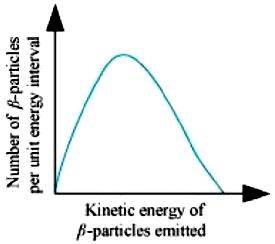Question 6.30:
Consider the decay of a free neutron at rest: n → p+
Show that the two-body decay of this type must necessarily give an electron of fixed energy and, therefore, cannot account for the observed continuous energy distribution in the β-decay of a neutron or a nucleus (Fig. 6.19).

[Note: The simple result of this exercise was one among the several arguments advanced by W. Pauli to predict the existence of a third particle in the decay products of β-decay. This particle is known as neutrino. We now know that it is a particle of intrinsic spin ½ (like , p or n), but is neutral, and either massless or having an extremely small mass (compared to the mass of an electron) and which interacts very weakly with matter. The correct decay process of neutron is
The decay process of free neutron at rest is given as:
From Einstein’s mass-energy relation, we have the energy of electron as
Where,
Δm = Mass defect = Mass of neutron – (Mass of proton + Mass of electron)
c = Speed of light
Δm and c are constants. Hence, the given two-body decay is unable to explain the continuous energy distribution in the β-decay of a neutron or a nucleus. The presence of neutrino νon the LHS of the decay correctly explains the continuous energy distribution.

© 2025 GoodEd Technologies Pvt. Ltd.